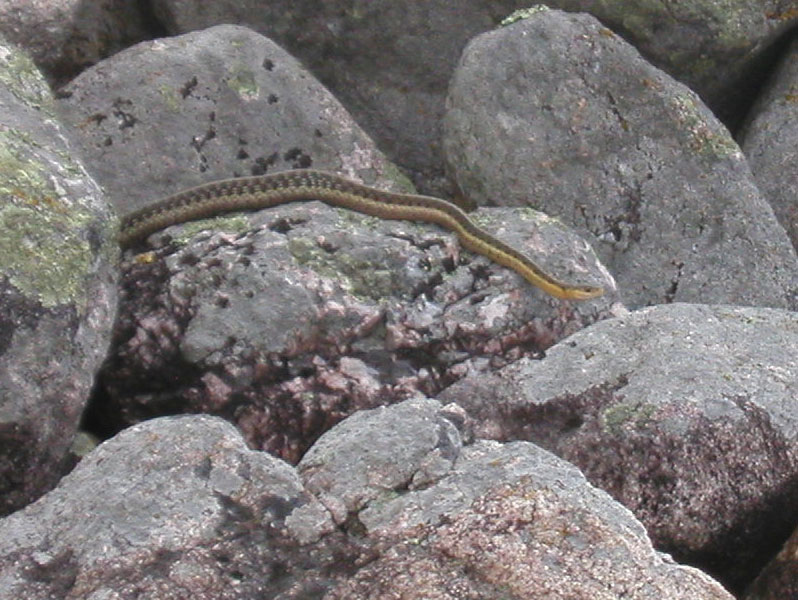
The 500m portage over the watershed into Sulphur Lake and the Mississagi system is a long, steady climb. The 1000m portage was very buggy and, in the heat, hard. Thrown in among these two brutes are a 200m and a couple of 90m walks, just for kicks.
We were thankful when this series of portages ended. They are the toughest on the trip. It is worth assuming, depending on weather that about half a day will be spent doing this bit.
The only wildlife we saw on this stretch was a snake.
At the end of the portage out of Shanguish Lake, we stopped to fish. Results: 4 small pike.